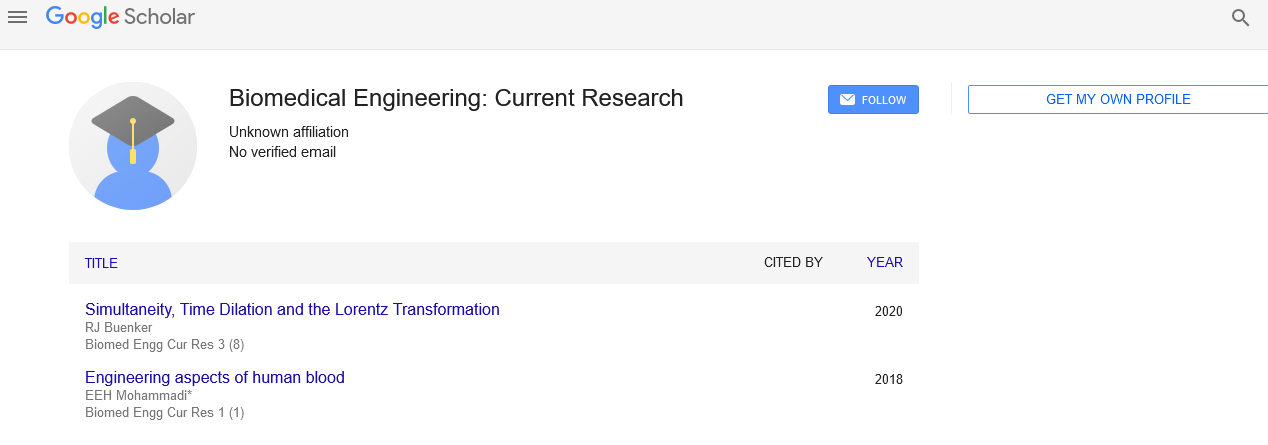Human usage of an endoscope
Received: 03-Jun-2022, Manuscript No. pulbecr-22-5169; Editor assigned: 05-Jun-2022, Pre QC No. pulbecr-22-5169 (PQ); Accepted Date: Jun 20, 2022; Reviewed: 18-Jun-2022 QC No. pulbecr-22-5169 (Q); Revised: 19-Jun-2022, Manuscript No. pulbecr-22-5169 (R); Published: 26-Jun-2022, DOI: 10.37532/PULBECR .2022.4(3).20-21.
Citation: Wilson R. Human usage of an endoscope. J Biomed Eng: Curr Res. 2022;4(3):20-21.
This open-access article is distributed under the terms of the Creative Commons Attribution Non-Commercial License (CC BY-NC) (http://creativecommons.org/licenses/by-nc/4.0/), which permits reuse, distribution and reproduction of the article, provided that the original work is properly cited and the reuse is restricted to noncommercial purposes. For commercial reuse, contact reprints@pulsus.com
Abstract
This study discusses the current state and potential applications of infrared ray endoscopy, autofluorescence endoscopy, and image processing and analysis as new tools for gastrointestinal cancer. The histological categorization of early gastric cancer is achievable based on the spectroscopic properties. Spectroscopic measurements utilizing an endoscopic spectroscopic system are beneficial for differentiating between benign and malignant gastric mucosal lesions. Early gastric cancer's depth of invasion can be accurately determined by infrared ra- -y electronic endoscopy. Additionally, certain antibodies can mark cancer cells and produce a fluorescent signal potent enough to be detected by an infrared fluorescence endoscope when used with an indo cyanine green derivative. We examine the potential growth and assessment of autofluorescence endoscopy and suggest a system change that would also affect the excitation lights.
Keywords
Endogenous germs, Spectroscopic
Introduction
This study discusses the current state and potential applications of infrared ray endoscopy, autofluorescence endoscopy, and imimage processing and analysis as new tools for gastrointestinal cancer. The histological categorization of early gastric cancer is achievable based on the spectroscopic properties. Spectroscopic measurements utilizing an endoscopic spectroscopic system are beneficial for differentiating between benign and malignant gastric mucosal lesions. Early gastric cancer's depth of invasion can be accurately determined by infrared ray electronic endoscopy. Additionally, certain antibodies can mark cancer cells and produce a fluorescent signal potent enough to be detected by an infrared fluorescence endoscope when used with an indo cyanine green derivative. We examine the potential growth and assessment of autofluorescence endoscopy and suggest a system change that would also affect the excitation lights.
Endogenous germs, which may come from previous patients or contaminated reprocessing equipment, or endogenous flora, the patient's microorganisms, are two main causes of infections associated with endoscopic treatments. Due to low frequency, the lack of clinical signs, or insufficient surveillance, the actual rate of endoscopy-related transmission may be overestimated. The benefits of diagnostic and therapeutic endoscopy are substantial, as are the drawbacks of decontamination. Endoscopes are expensive and in high demand, especially for those used in minimally invasive surgery.
As a result, there aren't enough of them to treat everyone on the waiting list.
The important functions of endoscopic image processing include highlighting lesions to aid in their detection and qualitative diagnosis as well as increasing the precision of endoscopic diagnosis by transforming diagnostic data based on color and structure into more objective and quantitative indicators. The term "image analysis" refers to the quantitative examination of a captured image and the extraction of its properties in numerical parameters for further image reconstruction. Image enhancement refers to the process of highlighting the features of a given image. In the 1980s, efforts to be underway to create endoscopes that could assess colors quantitatively these initiatives mainly focused on spectrometer-endoscope integration and image analysis with electronic endoscopes. The following important criteria must be met by an endoscope for color diagnosis: the ability to quantitatively analyze colors; the ability to display quantitative data in real-time; the simplicity of the test procedure for use during routine endoscopy; and the ability to distinguish between normal and abnormal data. Instrumentation development and clinical instrument evaluation must be effectively fostered through the combined efforts of the industrial and academic sectors. As a result, without putting the patients or the staff at unnecessary risk, we must have processing technology that can match this equipment's diagnostic and therapeutic capabilities.
In this work, the current state and recent developments in the fields of image processing, analysis, infrared ray endoscopy, and autofluorescence endoscopy for GI cancer have been discussed. How to transform subjective, olfactory-based endoscopic diagnosis into quantitative, objective endoscopic diagnosis is a common problem. Some of the technologies are almost ready for commercialization, while others are still in the early stages of testing. Fortunately, infections brought on by improperly cleaned and disinfected endoscopes and related equipment are quite rare. However, complete cleaning, disinfection, and sterilization will further lower this risk. Additionally, it will avoid incorrect diagnoses, instrument deterioration, and malfunction. The increased use of heat-labile flexible endoscopes for minimally invasive surgery may increase infection risks.





